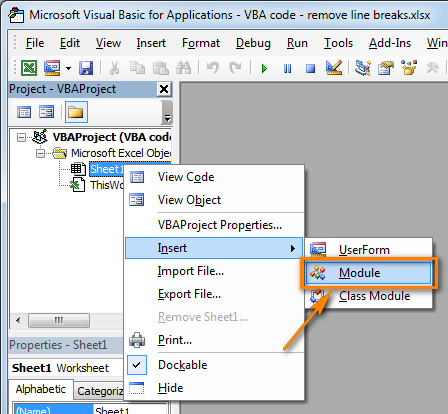
Microsoft excel for mac version 15 vba code#
Within the inner-most loop, the code would display a message box each time with the value of the LCounter1- LCounter2- LCounter3. In this example, the outer-most FOR loop would loop 2 times (starting at 1 and ending at 2), the next FOR loop would loop 2 times (starting at 5 and ending at 6), and the inner-most FOR loop would loop 2 times (starting at 7 and ending at 8). The inner-most FOR loop is controlled by the LCounter3 variable. The next FOR loop is controlled by the LCounter2 variable. The outer-most FOR loop is controlled by the LCounter1 variable.

MsgBox LCounter1 & "-" & LCounter2 & "-" & LCounter3
Microsoft excel for mac version 15 vba how to#
Next, let's look at an example of how to create a triple FOR loop in Microsoft Excel. So in this example, 8 message boxes would be displayed with the following values: 1-8, 1-9, 2-8, 2-9, 3-8, 3-9, 4-8, and 4-9. Within the inner loop, the code would display a message box each time with the value of the LCounter1- LCounter2. In this example, the outer FOR loop would loop 4 times (starting at 1 and ending at 4) and the inner FOR loop would loop 2 times (starting at 8 and ending at 9). The inner FOR loop is controlled by the LCounter2 variable. The outer FOR loop is controlled by the LCounter1 variable. Next, let's look at an example of how to create a double FOR loop in Microsoft Excel. The code would display 5 message boxes with the following values: 50, 45, 40, 35, and 30. So in this example, the FOR loop will start at 50, increment by -5, and end at 30. When you increment by a negative value, you need the starting number to be the higher value and the ending number to be the lower value, since the FOR loop will be counting down. Now, let's look at how to increment the counter of a FOR loop by a negative value.įor example: Sub Increment_Negative_Example The code would display 5 message boxes with the following values: 1, 3, 5, 7, and 9.

What this means is that the FOR loop would start at 1, increment by 2, and end at 9. In this example, we've used Step 2 in the FOR loop to change the increment to 2. Let's first look at an example of how to increment the counter of a FOR loop by a positive value.įor example: Sub Increment_Positive_Example The FOR loop can be increment can be either positive or negative values.

You can use STEP increment to change the value used to increment the counter. Single Loop - Changing Incrementīy default, the FOR loop will increment its loop counter by 1, but this can be customized. This code would display 5 message boxes with the following values: 1, 2, 3, 4, and 5. Each time within the loop, it would display a message box with the value of the LCounter variable. It would loop 5 times, starting at 1 and ending at 5. In this example, the FOR loop is controlled by the LCounter variable. This will allow you to repeat VBA code a fixed number of times. The simplest implementation of the FOR loop is to use the FOR.NEXT statement to create a single loop. Let's look at how to create a FOR loop in Microsoft Excel, starting with a single loop, double loop, and triple loop, and then exploring how to change the value used to increment the counter each pass through the loop.

The FOR.NEXT statement can only be used in VBA code in Microsoft Excel.


 0 kommentar(er)
0 kommentar(er)
